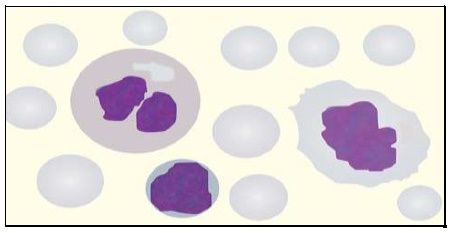Uses of Anticoagulants for Hemotological Investigations
Explore the key anticoagulants used in hematological investigations, including EDTA, heparin, and trisodium citrate. Learn about their mechanisms, applications, and preparation for accurate blood analysis.

Highlights
- Discover the most widely used anticoagulants in hematology, including EDTA, heparin, and trisodium citrate, along with their specific roles in blood sample analysis.
- Learn about the mechanisms and applications of each anticoagulant used in hematological investigations to ensure accurate test results.
- Explore the preparation and best practices for handling anticoagulants to optimize blood analysis and avoid common pitfalls in laboratory settings.
Anticoagulants are crucial in hematological investigations, where their role is to prevent clotting, thus enabling accurate analysis of blood samples. Commonly used anticoagulants in clinical settings include ethylene diamine tetra-acetic acid (EDTA), heparin, and trisodium citrate, each with distinct modes of action and applications.
| Name | Mode of Action | Concentration | Main Uses | Disadvantages |
|---|---|---|---|---|
| EDTA | Chelation of calcium | 1.5 mg/ml | Complete blood count, blood smear, hemoglobin, electrophoresis, sickling test | Cannot be used for caogulation test; can cause pseudo thrombocytopenia on hematology analyzer |
| Heprin | Inhibition of thrombin activity | 15 U/ml | Osmotic fragility test, immunophenotyping | Cause blue background on blood smears; expensive |
| Sodium Citrate | Chelation of calcium | 0.109 mg/ml | Coagulation, estimation of ESR by Westergen method | Liquid anticoagulant: causes dialution and cannot be used for complete blood count |
Ethylene Diamine Tetra-acetic Acid (EDTA)
Box 1: Changes occurring due to prolonged storage of blood in EDTA
- Blood smear:
- Red cells: Crenation and spherocytic change
- Neutrophils: Separation of nuclear lobes, loss of granules, vacuoles in cytoplasm
- Monocytes and lymphocytes: Irregular lobulation of nucleus, vacuoles in cytoplasm
- Platelets: Disintegration
- Hematological tests:
- Packed cell volume and mean cell volume: Increase due to red cell swelling
- Osmotic fragility: Increases
- Total leucocyte and platelet counts: Progressive Decrease
Also known as Sequestrene or Versene, EDTA is the anticoagulant of choice for routine hematological tests, but it is unsuitable for coagulation studies. It works by chelating calcium, which is essential for blood clotting. The International Committee for Standardization in Hematology recommends using dipotassium EDTA, as it dissolves more readily in blood. A typical concentration of EDTA used is 1.5 mg per ml of blood. Using excess EDTA can cause morphological changes in blood cells, including shrinkage of red and white blood cells and erroneous platelet counts. Blood stored in EDTA for extended periods undergoes alterations in cell morphology and test results, as shown in Box 1.
- Dipotassium EDTA 20 gm
- Distilled water 200 ml
Place 0.04 ml of the solution in a bottle for 2.5 ml of blood. Ensure the anticoagulant is dried before use, and collect 2-3 ml of blood for standard tests.

Heparin
Heparin prevents coagulation by enhancing the activity of antithrombin III, which inhibits thrombin and other coagulation factors. It is commonly used at a concentration of 15-20 IU/ml of blood. While heparin is effective for osmotic fragility tests and immunophenotyping, it should be avoided in total leukocyte counts due to its tendency to cause leukocyte clumping. Additionally, heparin can produce a blue tint on blood smears, which may interfere with microscopic examination.
Double Oxalate (Wintrobe Mixture)
Double oxalate, a mixture of ammonium and potassium oxalate in a 3:2 ratio, is employed for routine hematological tests and erythrocyte sedimentation rate (ESR) estimation. Its anticoagulant action involves calcium removal. However, double oxalate can cause red cell crenation and alter white blood cell morphology, making it unsuitable for blood film preparation.
Preparation
- Ammonium oxalate 1.2 gm
- Potassium oxalate 0.8 gm
- Distilled water upto 100 ml
Place 0.5 ml of this solution in a bottle for 5 ml of blood. The anticoagulant should be dried before use.
Trisodium Citrate (3.2%)
Trisodium citrate is the preferred anticoagulant for coagulation studies and ESR estimation via the Westergren method. It functions by chelating calcium, similar to EDTA, but is particularly suited for coagulation testing due to its specific concentration and application.
Preparation
- Trisodium citrate 3.2 gm
- Distilled water upto 100 ml
The solution should be refrigerated at 2-8°C. For coagulation studies, a 1:9 ratio of anticoagulant to blood is used, while a 1:4 ratio is recommended for ESR tests.
Use 1:9 (anticoagulant:blood) proportion for coagulation studies; for ESR, 1:4 proportion is recommended. ESR should be measured within 4 hours of collection of blood, while coagulation studies should be performed within 2 hours.
The information on this page is peer reviewed by a qualified editorial review board member. Learn more about us and our editorial process.
Last reviewed on .
Article history
- Latest version
Cite this page:
- Posted by Dayyal Dungrela